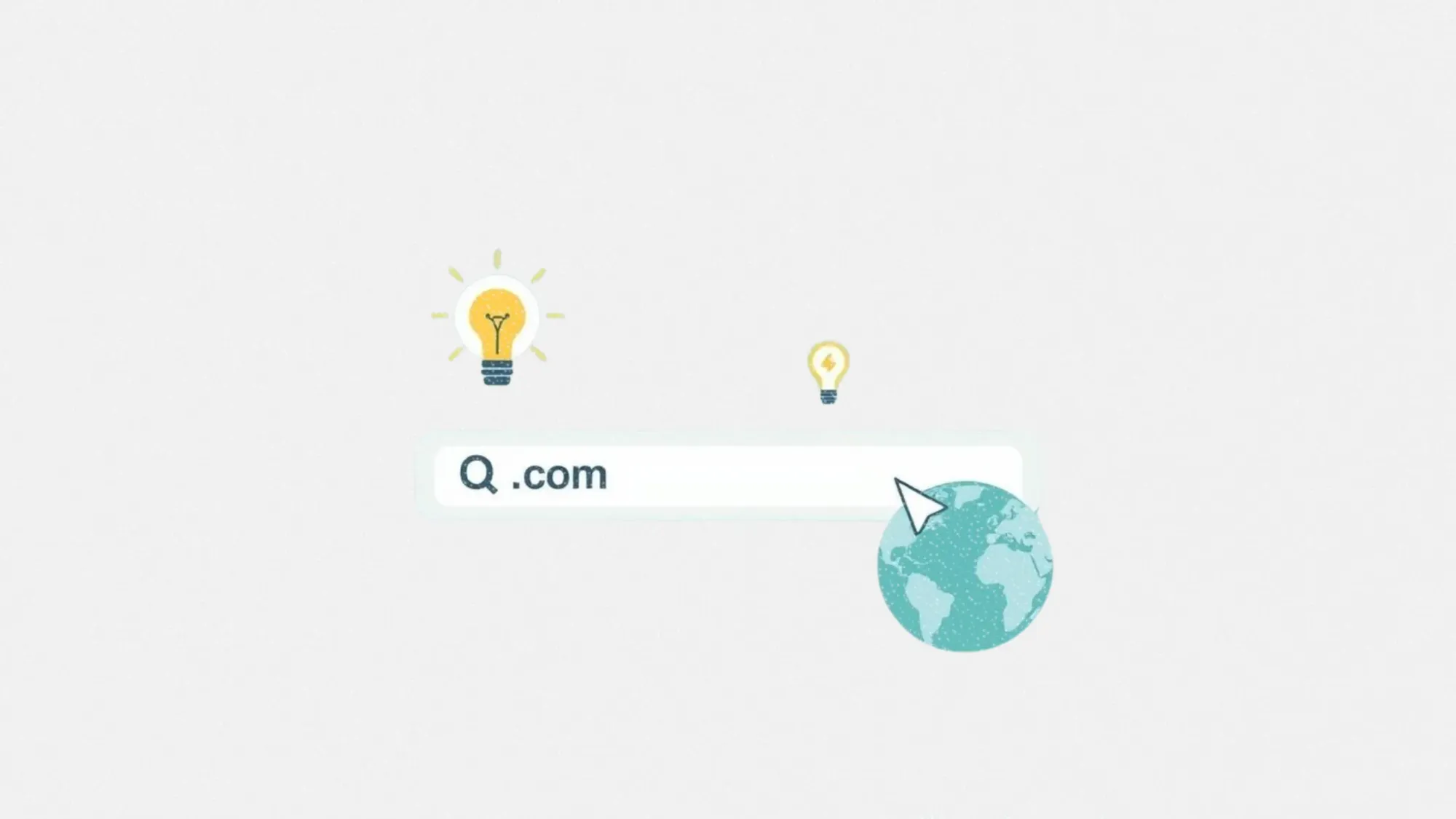How to use a domain name finder to kick-start your business
A practical guide to turning domain search tools into your first step for building a strong online brand.

Choosing a name for your business used to mean checking if it looked good on a sign. Now, it starts with checking if the .com is available. Your domain name isn’t just your web address. It’s the foundation of your brand online.
If you get it wrong, people can’t find you. If you get it right, it can boost traffic, build trust, and make your business easier to market. This is where a domain name finder becomes your best early-stage tool.
Whether you're still brainstorming or narrowing down ideas, using the right tool makes the process faster, clearer, and a lot less frustrating. Here's how to use it well and what to consider before you hit purchase.
Pick a name that helps increase website traffic, not just look good on paper
The name you choose plays a major role in how people find you online. While design and messaging help once they arrive, your domain name itself can influence whether they get there in the first place. A good domain name can increase website traffic when it’s intuitive, easy to spell, and relevant to what you offer. Think of it as your first SEO decision.
Let’s say you’re starting a digital bookkeeping service. If your business is something abstract, like Blue Skies Unlimited it might sound professional, but it doesn’t tell Google or your customers what you do. Your domain could be something like BlueSkiesBookkeeping.com to offer clarity, which helps with search engine recognition and user trust. People click what they understand. You’re not just buying a name.
You’re giving yourself an advantage in search results and helping people remember how to get back to you. Getting cute or overly clever with your domain can backfire if you’re not careful.
What makes a domain name finder actually useful
With a thousand tools out there promising to help you find a name, it helps to know what separates the good ones from the time-wasters. The best domain name finder tools don’t just tell you what domains are already taken. They help you explore what’s possible. You should be able to enter a word or phrase and get suggestions based on availability, keyword strength, and extension variety.
A well-built finder tool will give you real-time results, so you know immediately whether a domain is available. It should also offer alternatives, like suggesting .co or .io if .com is taken, and show relevant variations of your idea without making you start from scratch. If you’re exploring different markets or product lines, it’s also helpful if the tool lets you search for multiple names in one session.
Use it as a brainstorming tool, not Just a search bar
Most people think of domain finders as the place to go once they’ve already picked a name. But some of the best business ideas come from playing with combinations and seeing what’s actually available. Use the tool as part of your creative process. Type in keywords related to your industry, your values, or your audience to see what the tool returns.
This approach helps you break out of the trap of choosing a name that’s already taken and then compromising with hyphens or strange spellings. Instead, you’re starting with the end in mind: what names are available, clear, and brandable? You may discover combinations you hadn’t thought of that sound better and are easier to remember.
Consider extensions based on your industry and location
Most people default to .com without thinking twice. But in some industries, other domain extensions can be a better fit, or at least a helpful addition. If you’re in tech, .io is widely recognized. If you run an agency, .studio or .agency might be more relevant. These alternatives can also come in handy when the .com is taken but the brand still works.
It’s also worth thinking about location. If your business is tied to a specific region, consider buying the country-code extension like .us or .ca or even spelling out your city or state in the domain name. This can help with local search rankings and make your business feel more approachable to nearby customers.
Check for red flags before you buy anything
Not every available domain is a good idea. Some names come with baggage you won’t see until you look closer. That could be an expired domain with a shady past, a name that’s one typo away from a major brand, or something that sounds fine in your language but has an unfortunate translation somewhere else.
Before you hit purchase, do a few basic checks. Search the name in a browser to see if anything similar already exists. Look it up on social media to see if someone’s using a handle that could cause confusion. And always say the name out loud. If it’s hard to pronounce, hard to spell, or just awkward, it’s probably not the one.
